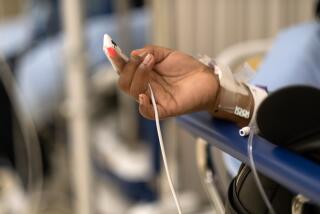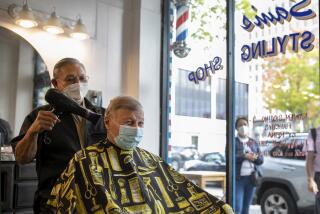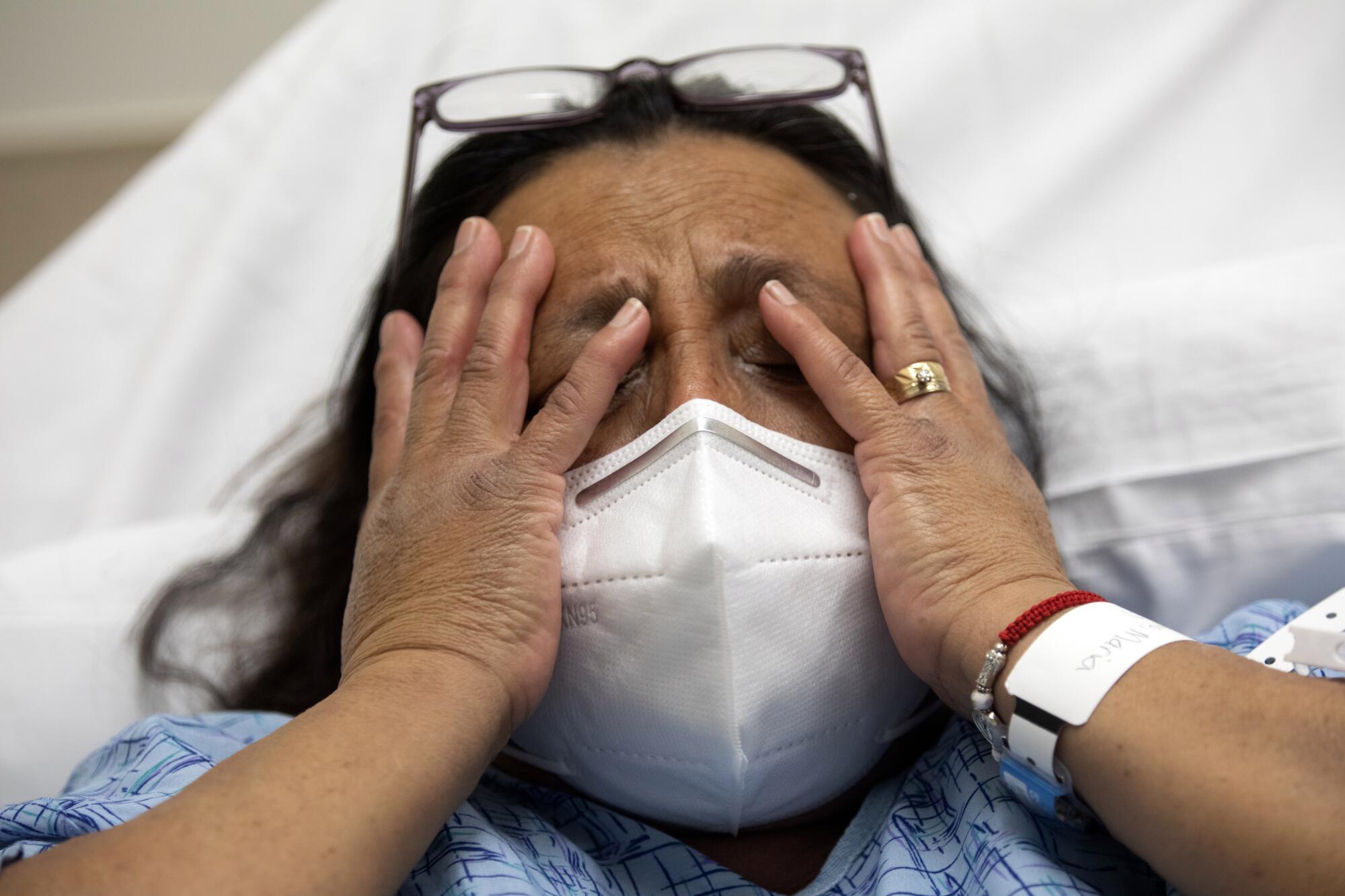
The couple from Santa Ana were not ready for the conversation.
Maria Apolonia Mandujanu, 53, clasped her hands across her chest. She was propped up on crisp white pillows in a hospital bed in the emergency department COVID-19 ward at Providence St. Joseph Hospital. Her mouth and nose were obscured by a mask. Her brow was furrowed.
Her husband, Arturo, was a disembodied face on an iPad screen at the foot of the bed, a nervous, tinny voice offering distant comfort. A translator was at the ready, another floating face on yet another screen.
“Has anyone ever asked you before what you would want done if your heart stopped?” Dr. Brian Boyd asked Mandujanu, who had tested positive for the coronavirus just a day earlier.
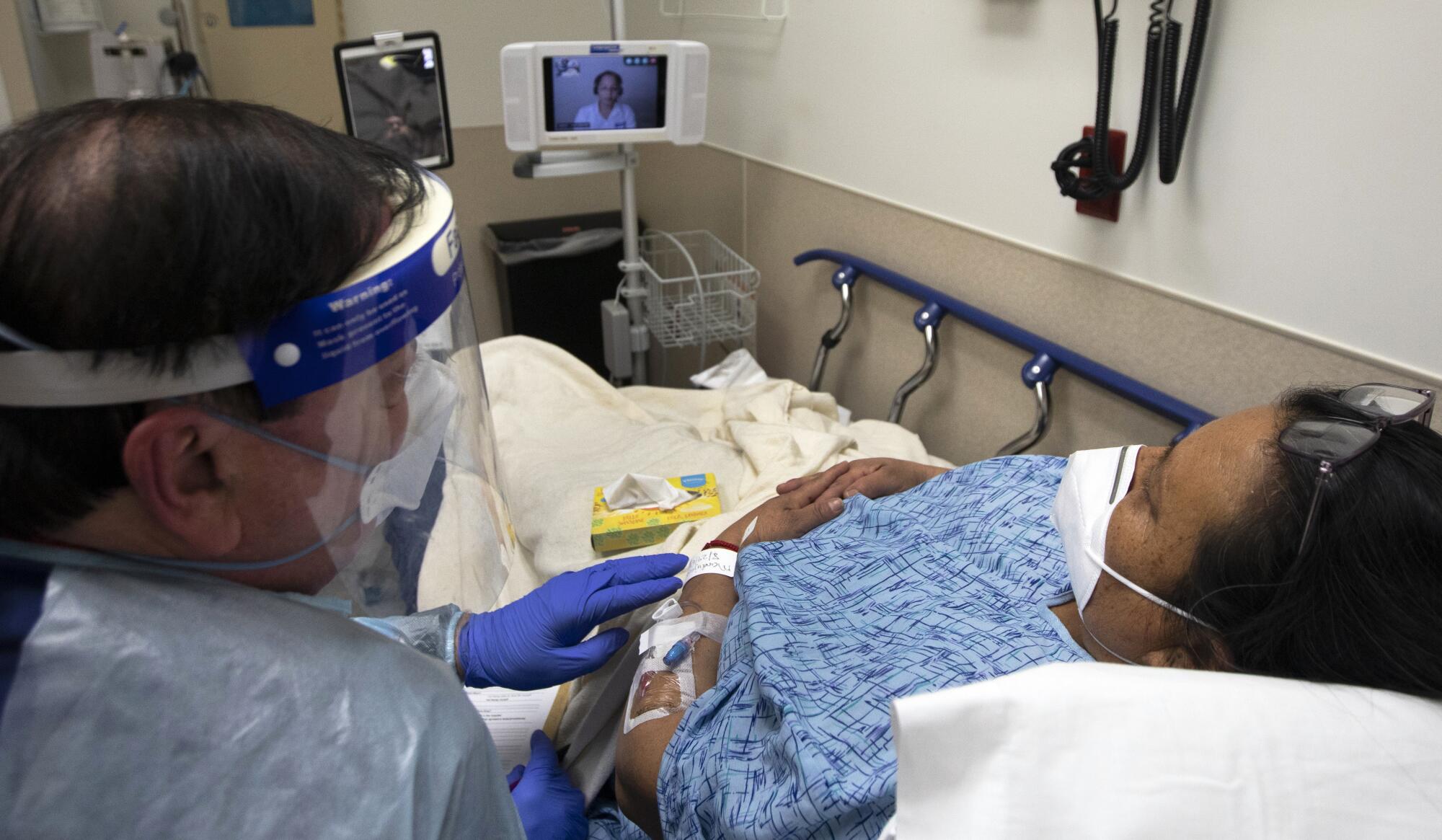
His words, gentle yet terrifying, were muffled by a double barrier of N95 mask and clear plastic face shield. Mandujanu’s eyes widened. Boyd pushed on. It was a Monday evening, and the U.S. had just hit a terrible milestone: 500,000 people cut down by COVID-19.
“If you would want the shock paddles?” he continued. “If you would want the chest compressions to circulate the blood? Has anyone ever asked you that before?”
“I don’t remember,” Mandujanu said. Then she paused and switched to Spanish. The translator finished the thought: “I have been many times to the hospital, and I can’t remember that they asked me that.”
As the pandemic’s winter surge overwhelmed hospitals across the country, a team of doctors and social workers at St. Joseph in Orange began an unusual effort designed to ease the burden on COVID-19 patients, their worried families and the healthcare workers ministering to them.
Team members began asking the sickest COVID-19 patients when they showed up in the emergency department what they would choose if drastic measures were ever needed to keep them alive. Conversations about a person’s wishes — and what lifesaving care actually entails — do not happen with most patients in most hospitals, let alone when they show up in the emergency room for the first time suffering from COVID-19.
The hospital had pondered such innovation even before the pandemic hit. COVID-19 made it a reality, and it will remain in some form in the St. Joseph emergency department long after the virus abates.
When a COVID patient shows up in emergency, Boyd said, it’s a “golden hour” for a talk about hard choices, because “you’re catching people when they are still cognizant — with a disease in which a patient can deteriorate extremely quickly.”
COVID-19 patients can go from bad to worse in short order, leaving sometimes conflicted families little time for the biggest decisions: Ventilators and tracheostomies and shock paddles and maybe a feeding tube? Or just pain medication and comfort care?
Fewer than 30% of adults in the United States have completed a so-called living will that actually states their wishes; only about a third have designated someone to make healthcare decisions for them if they can’t do it themselves.
The details of resuscitation and intubation are grim: chest compressions that break ribs; a tube down the throat to speed oxygen to diseased lungs; an array of powerful drugs to ease the pain of ventilation, paralytics, opioids and sedative hypnotics; three to four weeks in a medically induced coma; and after all that, bad odds of survival.
When faced with such reality, many elderly COVID patients are “pretty clear,” Boyd said. “They don’t want to be intubated.” But the hospital’s default — if patients can’t talk and no one knows what they want and there’s no one designated to decide — is to go “full code” and do everything possible to keep people alive.
Mandujanu was the first of three patients Boyd saw during his four-hour shift in the emergency department that somber Monday evening. Each encounter was filled with anxiety.
“It really drove home to me the central theme” of these conversations, Boyd said. When it comes to timing, “it’s always too early. Until it’s too late.”
::

Mandujanu arrived at St. Joseph with a new COVID-19 diagnosis, complaining of a four-day headache and burning in her nose.
Her doctor had sent her to the emergency department because she had had a kidney transplant 13 years earlier, and anti-rejection drugs suppressed her immune system. That could put her “at higher risk for severe disease from COVID-19,” according to the National Kidney Foundation.
Lying in outpatient Room 47 on that Monday night, the Santa Ana homemaker said she was hearing for the first time the difficult questions about being resuscitated or intubated if necessary. Boyd’s query about shock paddles and chest compressions was followed by a conversation about other serious possibilities.
Boyd: “The related question, and this would be important as well, if your breathing got worse and you weren’t getting enough oxygen, would you want a tube put down into your lungs and be put on a breathing machine, a respirator?”
Translator: “You said that she might need the respirator?”
Boyd: “No. Everything looks really good right now. .... But we just want to make sure that we know what your desires are. What I’m hearing is, that if you needed those things you would want them. Is that right?”
Mandujanu: “Of course.”
Boyd: “Have you talked to your husband, Arturo, about those things?”
Mandujanu: “No.”
She closed her eyes and began to cry.
Boyd: “I don’t want to make you upset. What do you feel right now?”
Mandujanu: “Scared.”
Boyd rubbed her arm with a hand encased in two pairs of extra-large gloves. He was wearing a light blue isolation gown on his tall frame. Even though his face was mostly covered, he had a big blue badge hung around his neck printed with his maskless photograph so patients could see who they were talking to.
His chair was pulled up close to the big bed and turned so he could see husband, wife and translator. Mandujanu’s flip-flops were tucked underneath. The bright fluorescent lights in the small room made their costume jewels sparkle. Boyd handed her a box of tissues.
Arturo kept asking if Mandujanu’s doctor, the one who performed transplant surgery and had sent her to the emergency department, would be involved in her virus care. He was concerned about the effect of COVID treatment on her transplanted kidney. He thought it wasn’t the right time for this kind of talk. The couple conferred in quiet Spanish.
Arturo: “Sí entiendes lo que te quieren decir?” Do you understand what they’re telling you?
Mandujanu: “Sí.”
Arturo: “Yes? Are you ready to make a decision like that?”
Mandujanu, her voice choked with tears: “Well, I don’t know. What can I do if I need to breathe? I need a machine to breathe. I have to do it.”
Arturo: “Tell them, ‘If there’s a case that I need the respirator, put it on me.’”
::
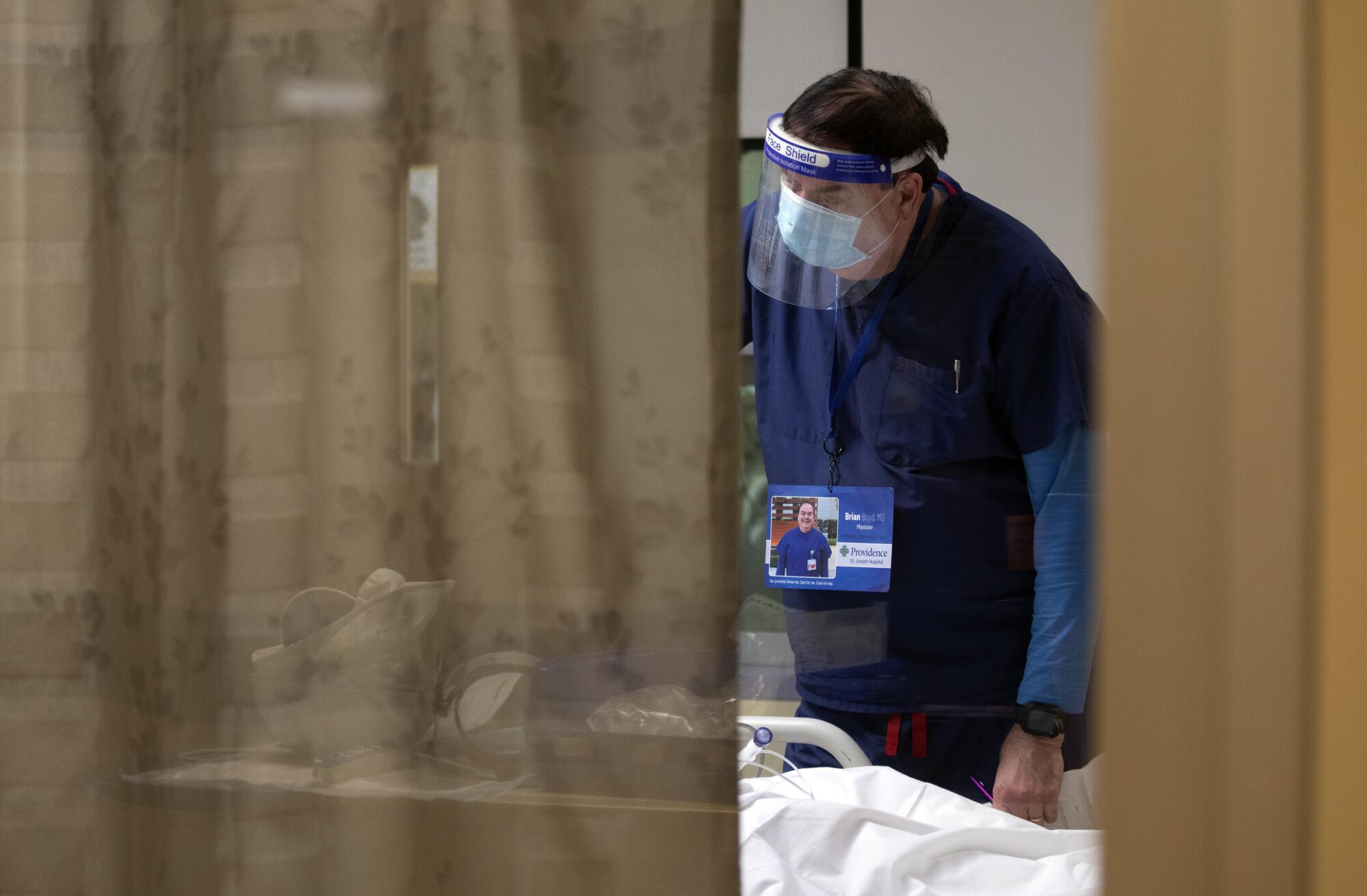
Not long before Boyd began his shift in the emergency department on Feb. 22, President Biden joined the nation in a moment of shared mourning more than 2,000 miles away.
“Today, we mark a truly grim, heartbreaking milestone: 500,071 dead,” Biden said. “That’s more Americans who have died in one year in this pandemic than in World War I, World War II and the Vietnam War combined. That’s more lives lost to this virus than any other nation on Earth.”
The occasion was not lost on Boyd, who has watched COVID patients flood the institution where he has worked for 34 years, where he leads the palliative care department and is chief of staff, where he puts in a full day before heading to the emergency department on Monday nights.
St. Joseph is midway between Santa Ana and Anaheim, between a city filled with multi-generational families and one with an abundance of nursing homes. Boyd calls it the coronavirus epicenter of Orange County, which has the second-highest number of deaths in the state and is fifth out of 58 counties in COVID-19 cases. St. Joseph has been one of the hardest hit hospitals here.
“It’s so numbing to hear the numbers,” Boyd said. He was speaking of the terrible U.S. toll that day, but he could easily have been referring to his own region’s burden. “It’s just one sadness after another.”
St. Joseph’s palliative care staff and the Institute for Human Caring at Providence began working early last summer on what they described as a kind of emergency department pop-up, which would be staffed when the need was greatest — from 6 p.m. to 10 p.m. Monday through Friday. They called it the Goals of Care Center. The pandemic’s second surge had just begun. The hospital was overwhelmed with sick people.
Hospital visits had been banned in an effort to halt the virus’s spread. Family members could not accompany their loved ones to the emergency department, and emergency doctors, pressed for time, could not sit with patients to explain the welter of difficult choices ahead.
By the time Boyd and Dr. Ira Byock — founder of the institute and author of “Dying Well” — had assembled their team, the crush of patients had abated. But when the pandemic’s third surge began, the Goals of Care team was ready.
Between Dec. 14, when Boyd saw the first patient, and Feb. 22, when he walked into Room 47 and sat down beside Mandujanu, he and the team’s doctors and social workers had consulted with 135 patients and their families.
Now that there are vaccines and the rate of coronavirus infection has dropped yet again, the Goals of Care Center is evolving. St. Joseph has hired a social worker to be permanently embedded in the emergency department so patients and families there can continue having the kinds of conversations nobody wants but everybody needs.
By the end of March, the evening shift that cared for the flood of COVID patients will end.
Until the next surge arrives.
More to Read
Sign up for Essential California
The most important California stories and recommendations in your inbox every morning.
You may occasionally receive promotional content from the Los Angeles Times.

